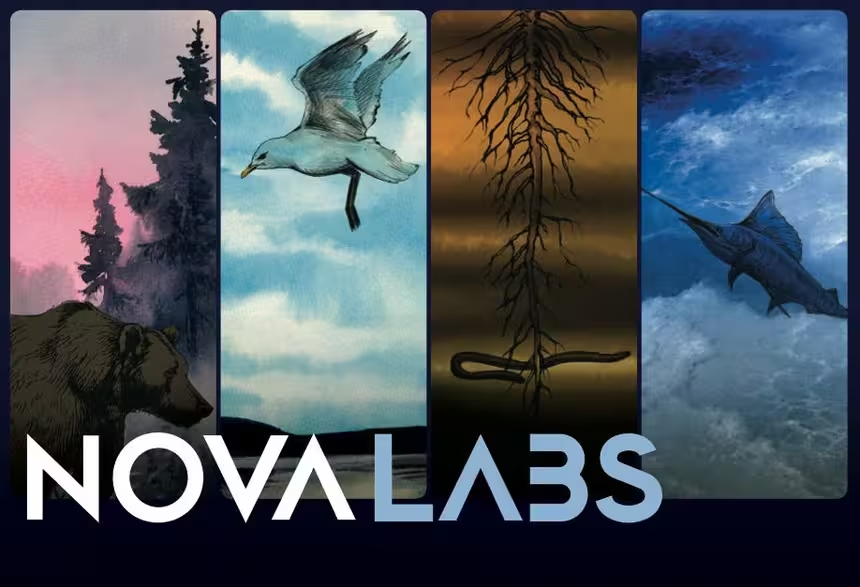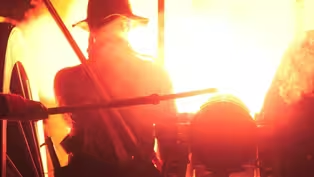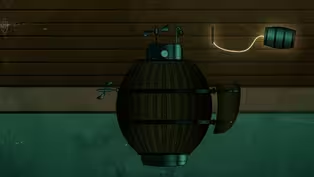
How Deadly Was the Musket?
Clip: Season 52 Episode 7 | 4m 57sVideo has Closed Captions
A team of experts put an 18th-century musket to the test — revealing how deadly it really was.
At Fort Ticonderoga, a centuries-old weapon is put through a modern test. Using ballistic gel, a slow-motion camera and a chronograph, experts investigate the true power of the British “Brown Bess” musket.
Problems playing video? | Closed Captioning Feedback
Problems playing video? | Closed Captioning Feedback
National Corporate funding for NOVA is provided by Carlisle Companies and Viking Cruises. Major funding for NOVA is provided by the NOVA Science Trust, the Corporation for Public Broadcasting, and PBS viewers.

How Deadly Was the Musket?
Clip: Season 52 Episode 7 | 4m 57sVideo has Closed Captions
At Fort Ticonderoga, a centuries-old weapon is put through a modern test. Using ballistic gel, a slow-motion camera and a chronograph, experts investigate the true power of the British “Brown Bess” musket.
Problems playing video? | Closed Captioning Feedback
How to Watch NOVA
NOVA is available to stream on pbs.org and the free PBS App, available on iPhone, Apple TV, Android TV, Android smartphones, Amazon Fire TV, Amazon Fire Tablet, Roku, Samsung Smart TV, and Vizio.
Buy Now

NOVA Labs
NOVA Labs is a free digital platform that engages teens and lifelong learners in games and interactives that foster authentic scientific exploration. Participants take part in real-world investigations by visualizing, analyzing, and playing with the same data that scientists use.Providing Support for PBS.org
Learn Moreabout PBS online sponsorship(soldier shouting) (muskets blasting) - [Narrator] Today, the musket is seen as crude and inaccurate, especially when compared to modern guns.
But is that true?
(tense music) At Fort Ticonderoga in Upstate New York, historic firearms researcher, Joel Bohy, is finding out how effective the musket was on the battlefield.
- So what we've got here is a British Pattern 1756 Long Land musket, more commonly known as the Brown Bess.
The Brown Bess begins use in about 1730, and this type of gun would've been the workhorse of the British army through the 18th century into the 19th century.
It was an extremely important gun to building the British Empire and used through the American Revolution.
- [Narrator] But for Joel, the best way to assess the musket is not by comparing it to modern weapons, but by testing its effectiveness in battle 250 years ago.
(tense music) To gain a better understanding, Joel's team will fire at a ballistic gelatin block designed to replicate human tissue, providing valuable insight into how different projectiles can affect a person's body.
(tense music) With the aid of a slow motion camera, he'll also try to answer a question, how damaging could a musket shot be?
(tense music) Finally, he will measure the speed each round exits the barrel, known as the muzzle velocity, using a chronograph.
(tense music) Marksman Jay Waller will be firing the guns.
(tense music) First up, the musket with the 0.69 caliber ball.
(musket blasts) (trigger clicks) Pulling the trigger instantly sets off a chain reaction in the flintlock mechanism.
(ignition whooshes) (ignition blasts) (trigger clicks) (ignition fizzes) A stone flint strikes a steel hammer.
(flint clacks) (spark fizzes) The impact creates sparks, which ignites the priming powder in the pan.
(ignition whooshes) This ignition passes through a small hole and sets off the gunpowder inside the barrel.
(round whooshes) The gas pressure produced here propels the round out of the gun.
(round blasts) On inspection, it's a direct hit.
- You can see where it traveled right through the block and came out the other side.
- [Narrator] Reviewing the footage, they can see the horrific damage caused.
(round whooshing) - Wow.
You see that ball zip right through.
Look at the cavitation in the gel from that .69 caliber ball.
(round whooshes) - [Narrator] When the ball moves through the block, it displaces the gel around it, creating a cavity.
This is known as cavitation, similar to what would happen to living human tissue, devastating to bones and internal organs.
- The men on Lexington Green knew how deadly these weapons were, but they never had the opportunity to see the damage in the way that we're seeing it now.
(tense music) (round whooshes) Wow.
Wow.
- Yeah, certainly gives a whole different appreciation and horror for what happened.
- [Narrator] The musket is clearly deadly.
So why do we see it as a primitive weapon?
Likely, because of what later guns can do.
Joel demonstrates this with the modern rifle.
(rifle blasts) - Oh!
Whoa!
Look at that.
(bullet whooshes) You can see the smoke from the bullet.
- [Narrator] The modern rifle's power is far more terrifying.
But what does the data reveal?
Using the chronograph, Joel and Jay compare muzzle velocities.
- On the Endfield, that is 2,314 feet per second, whereas the musket is 845 feet per second.
So there's a big difference between the two guns.
But you can really see the velocity when you look at the ballistics gelatin blocks.
(rifle blasts) - [Narrator] The higher velocity of the modern rifle's bullet means it carries substantially more energy.
(bullet whooshes) When it penetrates the block, much of this is transferred to the gel, causing it to lift into the air.
Revolutionary War Weapons Preview
Video has Closed Captions
Preview: S52 Ep7 | 30s | Explore key military technologies in the American colonies’ fight for freedom. (30s)
The World’s First Combat Submarine
Video has Closed Captions
Clip: S52 Ep7 | 10m 49s | Its nickname was the “Turtle”. (10m 49s)
Providing Support for PBS.org
Learn Moreabout PBS online sponsorship
- Science and Nature

Capturing the splendor of the natural world, from the African plains to the Antarctic ice.

Winnipeg In Bloom











Support for PBS provided by:
National Corporate funding for NOVA is provided by Carlisle Companies and Viking Cruises. Major funding for NOVA is provided by the NOVA Science Trust, the Corporation for Public Broadcasting, and PBS viewers.




